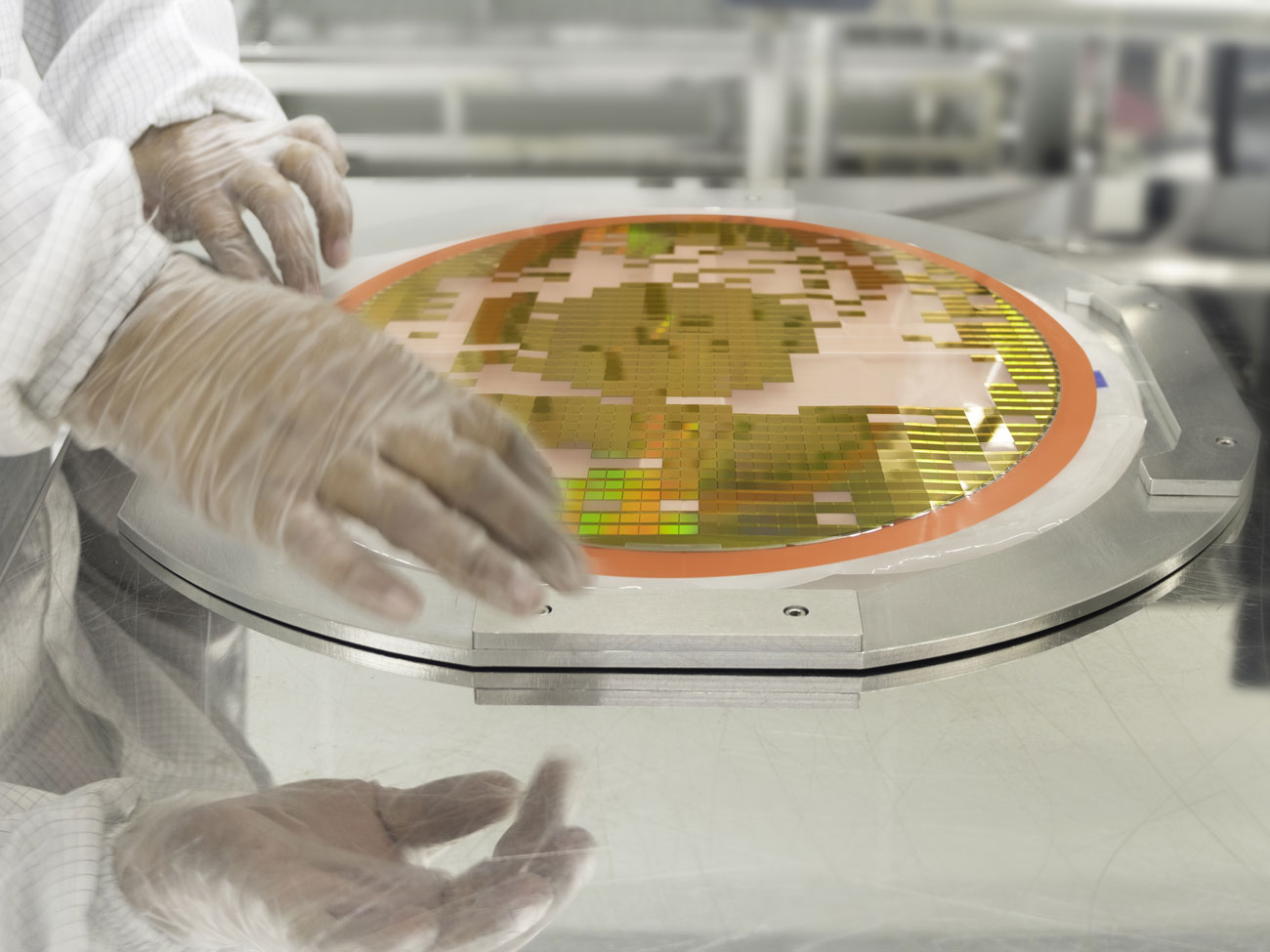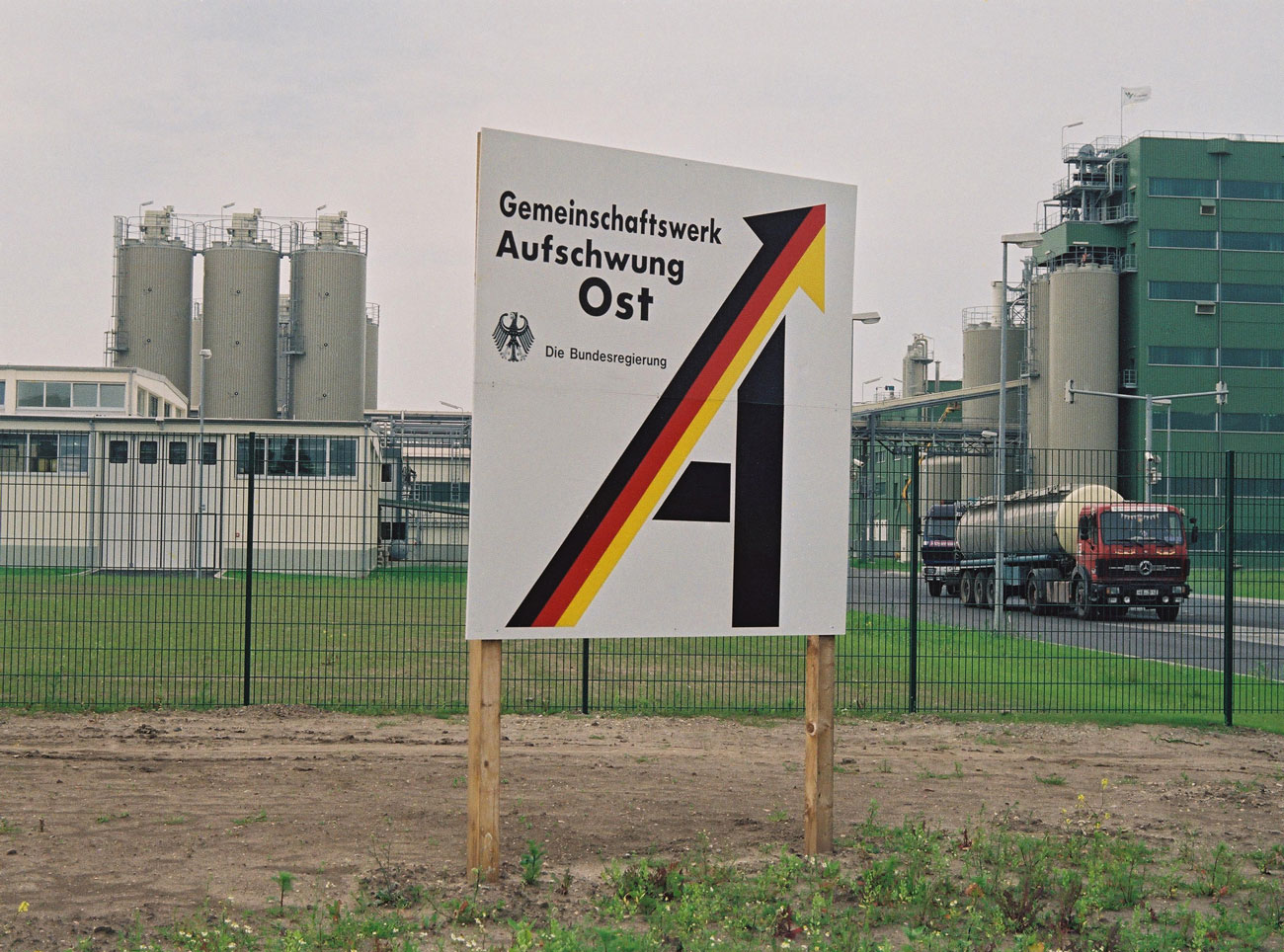
© Matej Meza / Universität Bremen
Modernization Obstacles in the GDR
A research project focusing on obstacles in the way of modernization in the GDR’S economic and scientific sectors wishes to close gaps in knowledge
In fall 2020, the German reunification will have been 30 years ago. Since then, the cliché that a capable, capitalist economy took on a broken and bankrupt socialist system in 1990 has solidified. A myth. There were certainly sectors in which the GDR was economically successful. There was also internationally renowned know-how available in science and technology. What hindered the GDR were “modernization obstacles.” Despite founded knowledge, new ideas and developments were not able to be implemented. These blockades are the focus of a research network led by Professor Jutta Günther from the Faculty of Business Studies and Economics at the University of Bremen.
The premature judgment stubbornly remains: The economyof the GDR was ailing and hardly able to compete. Perfor-mance in economic and technological sectors was below average. It was no wonder then that everything “went down-hill” in the end. The awful condition of East German com-panies and inadequate endowments of the individual sectors played a part in the collapse of the system. “That is not entirely wrong but far too general,” says Professor Jutta Günther. Since December 2018, the economist from the University of Bremen has been the head of the interdisciplinary and interregional research project Obstacles to Modernization in the Economy and Science of the GDR (Mod-Block-DDR). As one of a total of 14 projects being funded by the Federal Ministry of Education and Research it is to close gaps in knowledge of the GDR.

© Cezanne-Fotografie / AdobeStock
“Everything is bad, everything is old, nothing works”: Those who think of the GDR’s economy like that are making it easy for themselves. “Our research approach holds a much more differentiated view,” says Jutta Günther. “With which technological starting capital did the GDR enter into reunifi-cation? Which important economic-political decisions were made after ‘die Wende’ during the quick transition to a priva-tized economy? What effect do these decisions have today on the East German economy and its structures?” Those are the central questions that are driving ten researchers in Bremen. They are each working in Jutta Günther’s working group Innovation Economics or at the Research Centre for East European Studies at the university. Other project members come from universities and research institutes in Berlin, Halle, Jena, and Frankfurt/Oder.
Plans That Had Nothing to Do with Reality
The “primacy of production” ruled in the GDR’s economy: The central planning set immovable production goals that were to be fulfilled – or even better be exceeded. “The plan-ning had little to do with the reality there, which is why they had to fail in the end,” says the habilitation candidateAnn Hipp from the University of Bremen, who is working intensely on the project. “On the other hand, the scientific system in the GDR was of a high standard in the natural science and technical fields. In said areas but also in many companies there were well trained women and men. However, their knowledge was not able to be turned into innovative products because the materials for the realization were missing.” Despite there being a structure and techno-logy policy in the GDR, despite certain sectors being expediently strengthened again and again: In the end there was a lack of sufficient material and a higher performing infrastructure. The people had no incentives to work more than average, according to Hipp: “There was praise and certificates for researchers and workers. But that was it.”Dilapidated chemical conglomerates, moon landscapes in the lignite mining regions, outdated machines, substandard cars such as Trabant and Wartburg – these pictures have anchored themselves in our minds. “Yet the technological knowledge and competencies – the so-called human capital – was actually available,” says Jutta Günther. “There are several examples of successful technologies and development from the GDR that have managed to hold their ground with marketable products in capitalism – in optics, in microelectronics, cooling technology, or acoustics, to just name a few”.

© I’m Thongchai / AdobeStock
300,000 Patents Recorded in Database
The modernization obstacles in the GDR were system-based. An example from research and development: “More people worked there than in West Germany and they were very successful,” states Ann Hipp. “The total number of patents was very high – around 300,000. Together with our partners from Jena we have recorded all of the GDR patents in a database.” But also scientists had to fight againstextreme restrictions. They were unable to really com-municate with each other, had insufficient information, and too few international contacts. “Many had no chance to improve products because they always had to act within rules.” Much differently to the West, where inven-tions usually pay off financially and lead to new businesses being established that stem from universities for example, there were no such incentive systems in the GDR. However, the project members are not primarily working on the history of the economy but are rather looking at the further development alongside the foundations. “We want to better explain the present by having a better understanding of the past,” says Jutta Günther. “Do the long-term effects of socialism and the transformation into capitalism influence the structural weaknesses of the new states of Germany today?”

© Foto: Bundesarchiv B 145 Bild-00003561
Privatization Was “a Chaotic Time
”The motto “privatize quickly, redevelop decisively, shut down cautiously” applied in the “Treuhand” – the German Trust Agency. Privatization with Treuhand took until 1994. During this time, an extremely significant agenda was set for the further economic development of the East German regions. “That was a chaotic time. The companies were not able to suddenly switch to a market economy,” according to the professor. For many years, the government had a controlling hand – in some cases it is still happening today. “The privatization was also a political process. There were no free market forces at work. A great deal was destroyed during the transitional period, until the government stood up for thepreservation of several industrial locations. The directionsset back then are in some cases still having an effect today.”East Germany’s economic structures wererecharacterized after “die Wende.” An example with locationpolitics: Despite dilapidated facilities, it was decided toconserve the Central German chemical triangle around Halle/Saale, Merseburg, and Bitterfeld. “Of course, this was alsodone to secure jobs,” states Ann Hipp. “Basically, nearlyeverything had to be redeveloped. In the end, it was, however,the right decision. This location is very competitive today.It all happened back then under the heading of conservationof industrial cores.” The preservation of the microelectroniccompetence area around Dresden, where “Silicon Saxony” isnow an important location in the chip industry, is a further example.

© mmmx / AdobeStock
No Big Companies, Rather“Extended Workbenches”
But there is also the other side: 30 years after the reunification,the structures in East Germany are still generally weak.“The industrial basis is structured in small parts. There are nolarge companies like in the West, where VW, Daimler, orSiemens employ thousands of people in one company and atone location,” says Ann Hipp. “Many large companies aresimply extended workbenches in the former GDR, for examplethe Porsche factory in Leipzig. There are only few locationswhere both strategic research and developments take place.In East Germany, we have a very different company andindustry structure today.” “Grown entrepreneurship,” thuscreative and brave company establishments or positivedevelopments, as one knows them from the family-runeconomic history of Baden Württemberg for example, isunderrepresented in many East German regions.With their knowledge, the project members areto take part in current debates. “At the moment, thereare intense discussions on whether we should support EastGermanymore – or if all support should be possibly stopped,”according to Jutta Günther. “We want to contribute: Howand where can innovation be further supported, where doesinvestment play a role?” However, not only the “inner-German viewpoint” counts. At the same time, the situationsin Poland and the Czech Republic are being investigatedat the Research Centre for East European Studies in order to sharpen our perception of the East.
Further Information:
Where GDR Technologies Still Celebrate Success
Optical Technologies:
High-quality optic from Jena was already known in the 19th century. Afterthe Second World War, high-quality, first-classoptical products – often for the arms industry, butalso camera objectives or astronomical products –were produced by the Publicly Owned Enterprise(VEB) Carl Zeiss Jena. Top performance in rese-arch repeatedly led to internationally renowneddevelopments. After “die Wende”, a part of the VEB merged with Carl Zeiss Oberkochen in West Germany, another part remained active in Jenaunder the name Jenaoptik.
Microelectronics:
The Publicly Owned Enterprise(VEB) conglomerate Robotron held a high statusin the GDR as a computer manufacturer and wasgreatly supported. Electronic data processingequipment, small computers, microcomputers,personal computers, process computers, controlcomputers, but also office machines wereproduced. During some periods, memory chipswere produced in the GDR. However, theywere not able to hold their own in terms of inter-national pricing competition. The conglomeratewas liquidated after the reunification. However, the knowledge and skills of the people in this fieldformed a significant basis for the creation of acluster within the memory chip industry around Dresden, also known as Silicone Saxony. The research in this field is still very strong in and around Dresden.
Cooling Technology:
Leading technology incooling and refrigeration engineering came and still comes from Berlin, where the Publicly Owned Enterprise (VEB) Kältetechnik continually developed new technology during the GDR times .For example, freezing technology was provided by the VEB for the entire fleet of Russian fishingvessels. The company managed to stay onthe market after “die Wende” and is now known as Grasso GmbH. The industrial refrigeration technology expert is still implementing refrigerationmachines developed in the GDR in a modern formin supermarkets, storage facilities, air conditioningunits, and in the fishing industry across the world.
Sound Technology:
In 1972, the Publicly Owned Enterprise Musikelektronik Geithaim was founded. It was a company that significantly profited from the groundbreaking ideas of the inventor Joachim Kiesler. He pushed loudspeaker technology forwardand developed high-end electronic componentssuch as microphone amplifiers, mixing amplifiers,and power amplifiers but also electronic concertand church organs. Today, the broadcasting studiomonitor RL900 is not only in use in broadcasting houses but also in the Gewandhaus concert hall in Leipzig, the Semperoper opera house in Dresden, and the Konzerthaus concert hall in Berlin – and much like many other products it receives only thehighest praise. As Musikelectronic Geithaim GmbH, the company now supplies many channels and studios across the world and has a market share of 80 percent in the broadcasting and televisionsector.